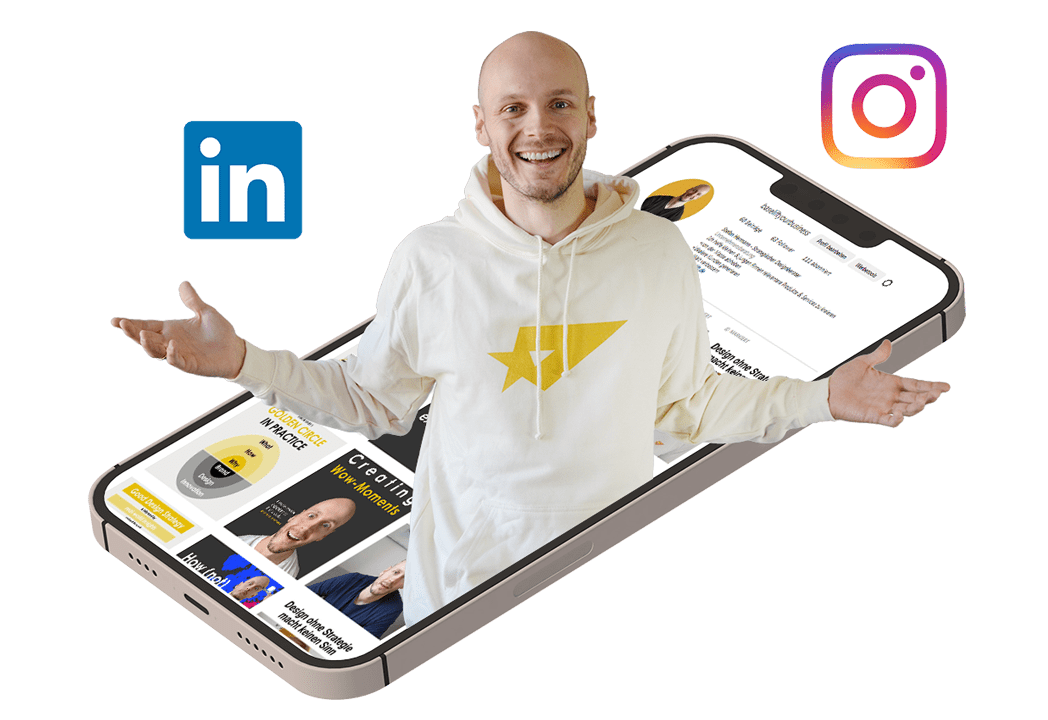Open Campus Content >>>
5 strategies for making the most of external design talent
Most SMEs use external talent the wrong way – making them little more than an expensive stopgap, delivering little more than OK solutions. Use external creatives right and they become game-changers that are almost no way inferior to an internal team.
The Premise
Not every company can live the dream of having a full-fledged in-house design dream team. Most small and many medium-sized companies need the support of external partners.
However, most small and midsize companies do not leverage their external partners to the fullest, leaving a lot of potential on the table.
5 Strategies to Leverage Your External Creative Talents to The Fullest
1. Prioritize Quality Over Cost
Are you tempted to choose the lowest bidder for your next project? Think twice. Sure, cheap design might look good on the surface, but it’s like putting lipstick on a pig—it might look prettier, but it’s still a pig. Cheap design often focuses solely on surface-level aesthetics, merely beautifying without addressing deeper customer and business needs.
In contrast, high-quality design not only enhances a solution’s visual appeal but also improves its usability, efficiency, and overall value by delving into its core functionality, streamlining business processes, and maximizing customer impact.
Investing in experienced, high-quality designers usually leads to superior outcomes and smoother collaborations. Professionals bring a wealth of knowledge and refined skills to the table, saving you time and a lot of headaches down the road.
2. Co-Create The Project Brief
Bringing designers in early isn’t just polite – it’s smart business. It’s like inviting the chef into the kitchen before you start burning the toast. When designers are part of the project briefing, it’s not just about sharing goals, scope, and expectations—it’s about setting your business up for success.
Seasoned designers (the ones who have seen things), bring a big-picture view that can help sharpen your ideas, spot plotholes before you fall in, and also reduce the need for constant project babysitting.
3. Provide A Comprehensive Brand Guide
Does your company have an up-to-date brand guide? Equipping freelancers with detailed information about your company’s identity and corporate design streamlines the design process and ensures consistency across all deliverables.
- Your company’s identity encompasses who it aspires to be, what it believes in, its core values, and what it cares about.
- Corporate design elements include things like logos, colour schemes, fonts, form language, recurring shapes and tone of voice.
A well-prepared brand guide significantly reduces revisions and misunderstandings and drives up the quality of the results.
4. Value Their Time And Expertise
Hire for expertise, then trust that expertise.
The truth is, top-notch designers aren’t chained to any one job or company. They’re free agents in the wild, picking and choosing where they want to work—and they definitely don’t stick around for clients who don’t respect their talent.
Plus, a happy freelancer is more likely to go the extra mile for you.
5. Explore Their Full Potential
Are you fully aware of your freelance designer’s capabilities?
Many designers possess a diverse range of skills beyond their primary focus, able to contribute more than just the initial project scope.
That graphic designer you hired for a logo? She might also be a UX research whiz or a brand management guru, meaning they can help you dive deep into user behavior and craft a consistent brand experience.
That one industrial designer? He could be sitting on a goldmine of sustainability knowledge, materials science, or engineering expertise—just the kind of stuff that can reduce your product’s environmental impact, streamline your manufacturing process, and maybe even launch the next big innovation.
Take the time to uncover your freelancers full skill set, and you might just strike gold in unexpected places.


